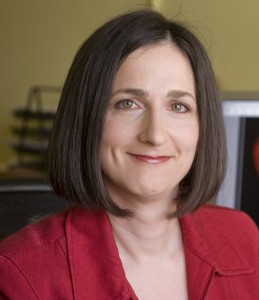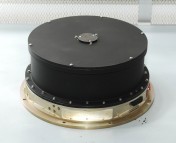
Sara Seager, Class of 1941 Professor of Physics and Planetary Science at MIT and Science Advisor to Planetary Resources.
A new company founded by space exploration veterans and backed by a group of billionaires, Planetary Resources, made news all over the world last month by announcing that they would mount the first commercial asteroid mining venture. Elizabeth Lovegrove wrote a fantastic analysis of the initial public announcement of their plans a few weeks ago; today, we interview one of their science advisors, Professor Sara Seager of MIT. Sara is an expert in the study of exoplanet atmospheres, interiors, and the signatures of life, as well as in the development and operation of space telescopes. Sukrit Ranjan and I sat down with Sara in her office at MIT.
While Planetary Resources was just made public last month, Sara has been working with its progenitor, Arkyd, for about a year on a contract together with NASA and Draper Labs. She has worked as a mechanical engineering advisor in the development of the Arkyd 100/Leo, which Planetary Resources is celebrating as the first private space telescope. They plan to manufacture and sell these telescopes, probably using a third party like SpaceX to launch them.
Arkyd approached Sara because of her experience building ExoplanetSat, a nanosatellite meant to search for transiting exoplanets around bright stars. She is now also a member of their broader Advisory Board.
We asked Sara what advantage Planetary Resources sees to having a network of small space telescopes searching for new near Earth asteroids. It’s true that space telescopes are capable of searching for asteroids between the Earth and the sun, where ground-based facilities can’t point. But she acknowledged that existing survey telescopes on the ground such as Pan-STARRS and CSS, with their wider fields of view, will have the space telescopes beat in terms of their ability to actually determine asteroid orbits. The real value Sara sees in developing this technology is as a commercial product to sell to scientists and other private parties interested in remote sensing.
Talking to Sara, it’s clear that what makes her excited about Planetary Resources isn’t the far-future prospect of bringing back trillions of dollars in heavy metals from asteroids, or even the nearer-term goal of sending spacecraft to make detailed studies of individual asteroids. What motivates her to spend her time on the venture is their potential, as she sees it, to revolutionize the access that scientists have to facilities in space. She describes a future where, as a scientist, “if you have a donor that can provide a million dollars, you could have your own space telescope.” She contrasts this to the costs and timescale for developing and deploying public facilities like JWST, and even smaller missions such as Kepler.
With all the large financial numbers swirling around the conversation, we asked her, “do you foresee the rise of a viable industry alternative to academia for astronomers?” She didn’t hesitate: “No. Do you?” She does see a role for Ph.D.s with the skillset of an astrophysicist, but she doesn’t expect Planetary Resources to be hiring astronomers in the traditional sense: scientists who are seeking to spearhead their own, new projects for a profit that is primarily intellectual. And there will be competition — she notes that Planetary Resources received more than 2000 job applications after their initial announcement last month, and decided to shut down that part of their website. She warned, “If I could teach all young astronomers, I’d say you need to pay attention to the business world because our life is also changing.”
What she does see is the opportunity for Planetary Resources to extend the science of astronomy itself: “…I think the optimism is the rise of the private commercial spaceflight world… if there is a sustainable business in space, if they lower the cost by factors of 2, or 3, or 4 in getting to space, that changes things for us.”
Looking at us, two graduate students in astronomy, Sara laid out her vision: if we take tenure-track positions at a university, we could combine a few modest startup packages and buy our own space telescope (she’s already been contacted by colleagues with proposals). “If you have a problem that’s very specialized and focused, that’s where their market is going to be,” she says. Sara is already working on a nanosatellite instrument for exoplanet searchers (ExoplanetSat), and she sees another obvious application in microlensing.

The design of ExoplanetSat, which uses a piezoelectric stage to achieve the kind of fine pointing control that would be required for optical laser communication in space. Figure from Pong et al. 2010 (SPIE 7731).
Sara pointed out that one of the major hurdles to Planetary Resources’ vision, and one of their potential avenues for profitability, is laser optical communications in space. This technology, if proven, would allow for vastly higher data transfer rates between spacecraft and ground-based receivers for a transmitter of a given size and weight. Given the cost of launching payloads into space, dramatically reducing the scale of a necessary instrument in this way has tremendous economic implications.
NASA will launch a demonstration project in just a few years, but Sara has already been working on foundational technology for laser communications. Her ExoplanetSat project pioneered the idea that a small space telescope could achieve the sub-arcsecond precision pointing necessary to direct a communications laser towards a receiver millions of miles away. This is an example of how basic research can drive technologies useful to private industry.
As for Planetary Resources, Sara says, “I don’t know what the timescale is. They’re trying to make it as short as humanly possible… I don’t know all the strategy of what they’re doing.” But if Planetary Resources does produce a mass-produced, affordable space telescope, Sara plans to use them for her own research. Perhaps further in the future, her goal is to achieve direct imaging of exoplanets from space by leading the development of a facility like the proposed Terrestrial Planet Finder.
We thank Sara for sharing her time with us. You can read more about Sara’s work in past Astrobites here, here, and here. You can read more of Sara’s thoughts in a recent Atlantic interview.





Class of 41?
Sara Seager holds the position of Class of 1941 Professor of Physics and Planetary Science. Her own graduation date was definitely somewhat more recent 🙂
http://web.mit.edu/physics/people/faculty/seager_sara.html